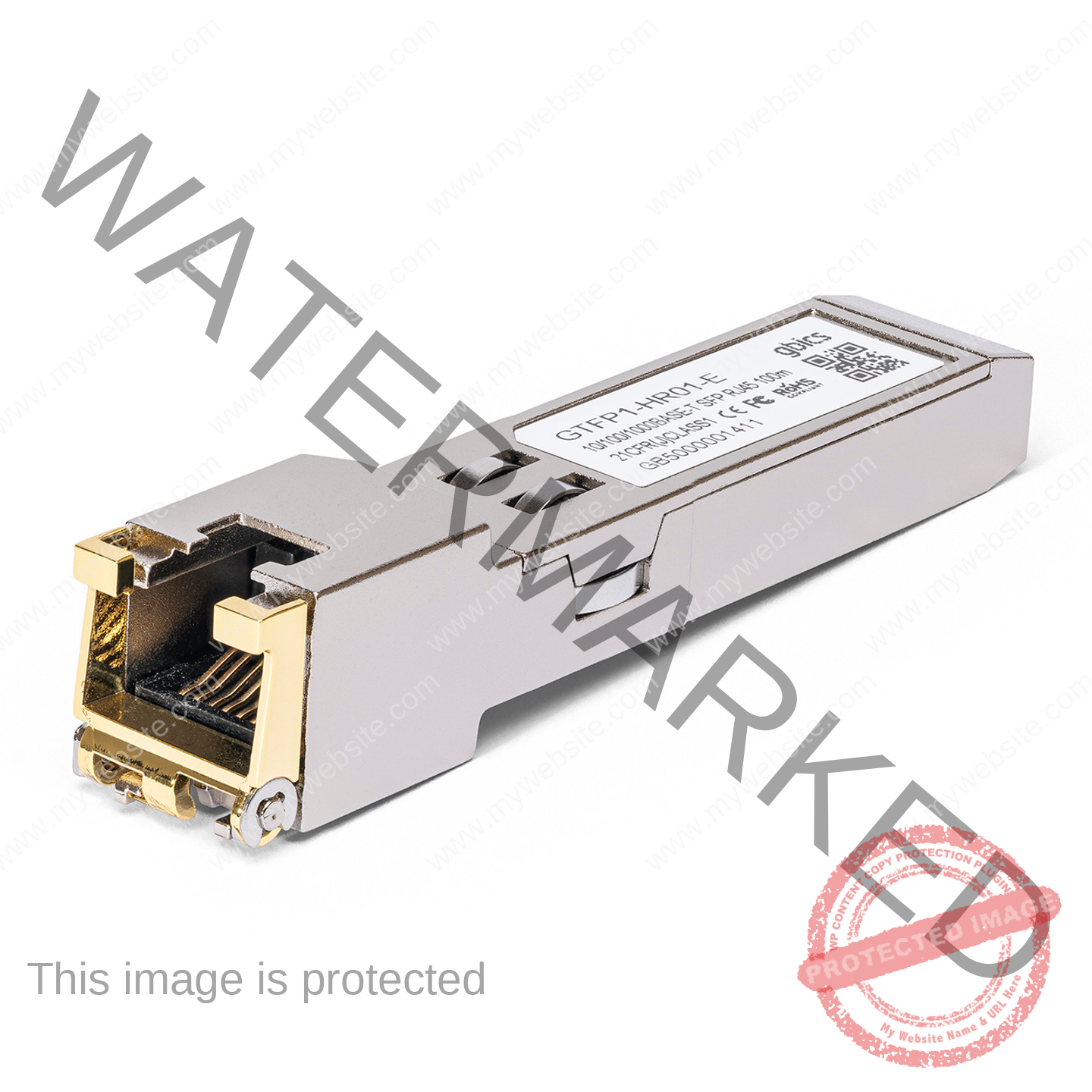In an era where fiber optic technology is rapidly expanding, copper-based networking solutions often get overlooked. However, when it comes to short-distance, cost-effective, and flexible networking, the 1000BASE-T SFP copper module remains a highly relevant and practical choice. Whether you’re managing an office network, upgrading a data center, or deploying edge devices, these compact and versatile transceivers continue to offer substantial benefits. But what exactly is a 1000BASE-T SFP copper module, and why should you consider it in your next deployment?
What is a 1000BASE-T SFP Copper Module?
A 1000BASE-T SFP copper module is a hot-swappable, compact transceiver that fits into standard Small Form-Factor Pluggable (SFP) ports on switches, routers, and network interface cards. Instead of using fiber, it leverages standard RJ-45 connectors and Cat5e/Cat6 copper cabling to deliver data at 1 Gbps over distances up to 100 meters. These modules comply with IEEE 802.3ab standards and support features like auto-negotiation and auto-MDI/MDIX, making them simple to deploy and operate.
Compatible with major brands like Cisco, HPE, Juniper, and others, these transceivers provide the flexibility to adapt copper connectivity to SFP-based devices without sacrificing speed or reliability.
Advantage 1: Cost-Effective Gigabit Connectivity
One of the most compelling reasons to choose 1000BASE-T SFP copper modules is the cost savings. Compared to fiber optic solutions that require expensive optical modules, fiber patch cables, and potentially new cabling infrastructure, copper modules are far more affordable.
If your building or network environment already has copper cabling installed, there’s no need to invest in additional infrastructure. Simply plug the copper SFP module into the SFP port, connect your existing RJ-45 cable, and you’re ready to go. This makes it an ideal solution for small to medium-sized businesses, branch offices, or temporary setups where budget constraints are a concern.
Additionally, third-party compatible modules—such as QSFPTEK’s Cisco-compatible 1000BASE-T SFP modules—can offer further cost advantages without compromising performance or reliability.
Advantage 2: Simple and Flexible Deployment
Deploying a 1000BASE-T copper SFP module is remarkably easy. These modules support plug-and-play installation, requiring no special tools or configurations. Since they use standard Ethernet cabling with RJ-45 connectors, they can be quickly integrated into any existing copper network.
Maintenance is equally simple. Unlike fiber optic modules, there’s no need to worry about fragile fiber ends, signal attenuation from bending, or specialized cleaning tools. Copper cables are more durable, easier to manage, and can be replaced or rerouted without skilled labor.
This convenience makes copper modules particularly useful in environments where quick deployment or frequent changes are required, such as in test labs, remote branch networks, or temporary installations at events and exhibitions.
Typical Application Scenarios
Enterprise and Campus Networks
Many office buildings, universities, and hospitals still rely heavily on copper infrastructure. Deploying 1000BASE-T SFP modules allows network administrators to take advantage of existing Cat5e/Cat6 wiring while upgrading core or edge switches to higher-performance models with SFP ports.
Data Center Short-Range Connections
In data centers, 1000BASE-T SFP modules can be used for top-of-rack (ToR) or middle-of-row (MoR) setups where short connections (under 100 meters) are sufficient. Instead of using more expensive fiber optics, admins can use copper cables for fast, cost-effective inter-rack connectivity.
Network Edge and Access Layer Devices
For edge switches, IP surveillance systems, or wireless access points that only require gigabit speeds over short distances, copper modules provide an ideal, compact solution without the need for fiber.
Temporary or Emergency Networks
When time is critical, such as during disaster recovery, events, or temporary office setups, copper SFP modules allow rapid deployment using common Ethernet cabling.
Common Questions
Q1: Can I use a 1000BASE-T copper SFP module in any SFP slot?
Yes, as long as the device supports SFP and is compatible with 1000BASE-T. Most modern switches support this, but it’s always best to check the vendor’s compatibility list.
Q2: Does it support auto-negotiation?
Absolutely. Most 1000BASE-T copper modules support auto-negotiation for duplex and speed settings, as well as auto-MDI/MDIX for cable polarity.
Q3: Can I mix copper and fiber SFPs in the same switch?
Yes. Copper and fiber SFPs can coexist in the same switch, enabling flexible deployment based on the physical network environment.
Q4: Can these modules be used for Power over Ethernet (PoE)?
No, SFP copper modules do not support PoE. If PoE is needed, it should be provided via dedicated RJ-45 switch ports.
Conclusion: Copper Still Has a Place in Modern Networks
The rise of fiber optics hasn’t made copper obsolete. On the contrary, 1000BASE-T SFP copper modules continue to play a vital role in network design, especially where short-range connectivity, lower costs, and fast deployment are priorities.
By offering gigabit speeds over standard Ethernet cables, these modules bridge the gap between legacy copper infrastructure and modern switch technology. Whether you’re looking to optimize cost, simplify management, or rapidly scale your network, 1000BASE-T SFP copper modules offer a practical and efficient solution.
So next time you’re configuring your network, don’t dismiss copper just yet—its flexibility, affordability, and ease of use may be exactly what your project needs.

